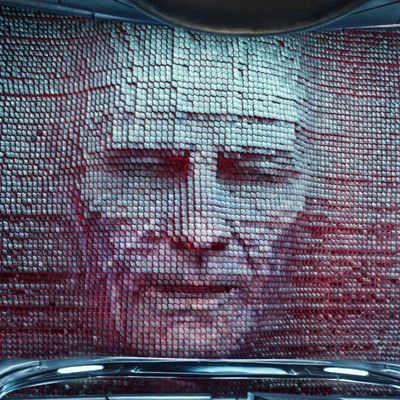
Despite his Tony and three Emmy Awards, Bryan Cranston isn’t exactly known for being a subtle performer. Do you need someone who can throw a pizza on a roof or wear a bee suit? He’s your man. Do you want quiet, devastating interiority? Okay, yeah, we also saw Breaking Bad’s “Ozymandias” we know he can do that. But it’s not the first thing that springs to mind, especially since Cranston’s post–Breaking Bad career has been full of performances so big they’d be legible to space aliens. Speaking of which: When Cranston joined the cast of Power Rangers to play the big-faced Zordon, we expected something absolutely ridiculous. But as it turns out, his performance is one of the best parts of the movie — funny, yes, but also relatively nuanced, both for a big-budget teen-superhero movie and for a modern Cranston role.
Unlike the version of the character seen in the Power Rangers TV show, Cranston’s Zordon is not a hologram so much as an animated wall relief, somewhere between Giant’s Causeway and a pin art toy. As we learn in the movie’s prologue, he used to be an alien Power Ranger, but he gave up his life to defeat Rita Repulsa. His consciousness has been preserved inside his former spaceship (sure), which is also occupied by a Alpha 5, a smart-aleck robot played by Bill Hader (why not). When the new Rangers arrive, Zordon’s thrilled to have some help, but the movie’s five main characters constantly fail to live up to his standards. Like most young people, they’re sassy, dim-witted, and unable to focus on the important things in life — in this case, morphin’. So Zordon’s enthusiasm for saving the universe comes with a side serving of disappointment, which Cranston delivers with delicious deadpan. If you were a million-year-old talking wall who realized the fate of the Earth was in the hands of a bunch of moody teens, you’d be disappointed too.
Before he became Zordon, Cranston voiced a series of monsters on the Mighty Morphin Power Rangers TV series and apparently served as the namesake for Billy Cranston, the Blue Ranger. As he’s emphasized in his press tour, this is something of a homecoming, and you’ve got to imagine the actor likes that kind of career poetry. In a 2014 GQ profile, he said that he chooses his roles with a system called the Cranston Assessment Project, in which he rates, “in decreasing order of importance,” a film’s story, script, role, director, and cast, with pluses and minuses added in for things like salary and time away from family. His career choices since then aren’t exactly explicable according to this system’s rubric, but you can imagine it pushing him toward big swings: Godzilla (perhaps for that classic story), Why Him? (for co-star James Franco), All the Way and Trumbo (the chance to play meaty roles), and In Dubious Battle and The Disaster Artist (he must really love James Franco).
Power Rangers, we can assume, made it through the “CAP” system mostly on the basis of “story” and “role,” not “director” (unless he’s a big fan of Dean Israelite’s Project Almanac), or “cast” (though Becky G’s “Shower” is a banger). But no matter the reason he signed up, we should be thankful for the movie for pushing the boundaries of what we expect from award-winning actor Bryan Cranston. It also, thankfully, leads to an interesting performance. Elizabeth Banks steals the movie as the cackling, gold-obsessed Rita Repulsa, who gives full expression to the sneering id that lurks inside her usual cable news blondes, but as Zordon, Cranston is disarmingly down-to-earth. He’s fatherly, ponderous, and once we learn about his ulterior motive for uniting the Power Rangers, nobly somber, like an archeological relic that could talk. Who knew that the Power Rangers movie would give us Cranston’s most outrageous stunt yet — signing on to a script that contains the word “Dinozords” and playing it straight.


